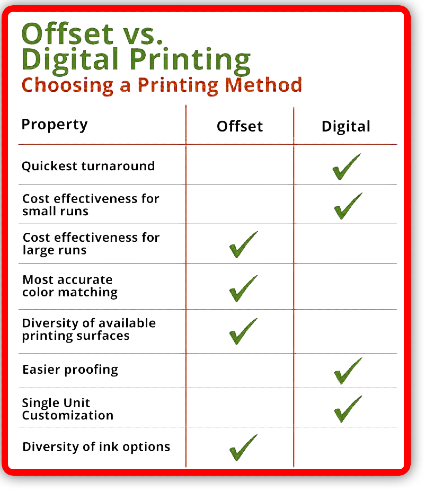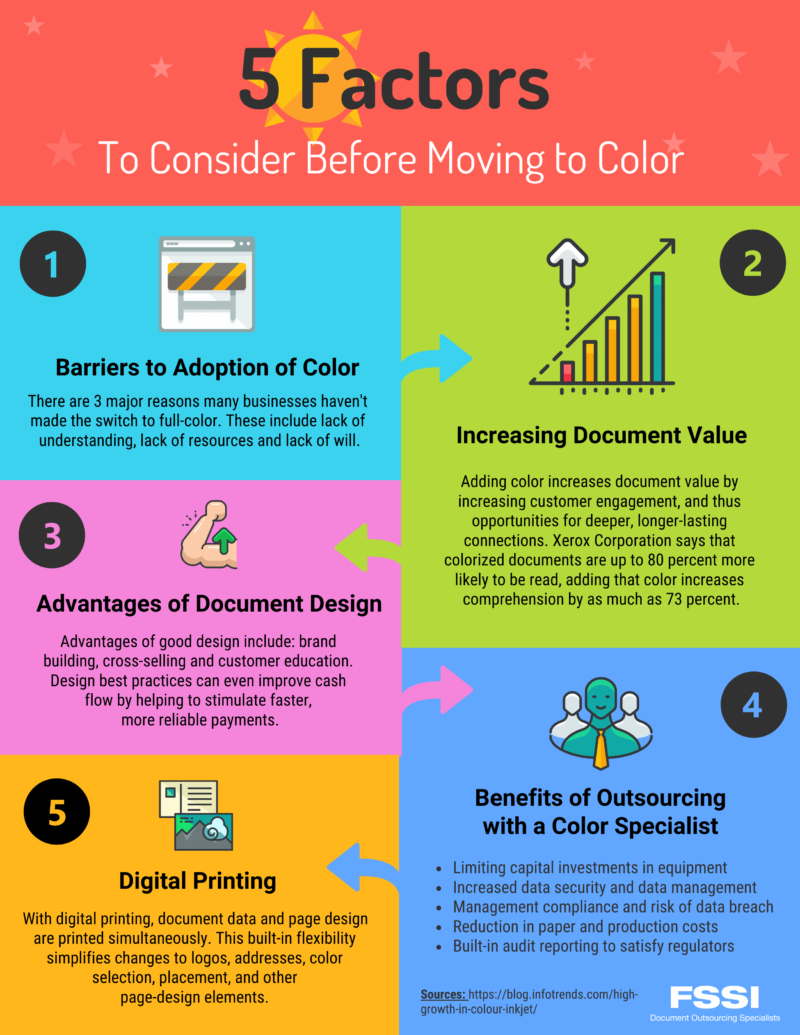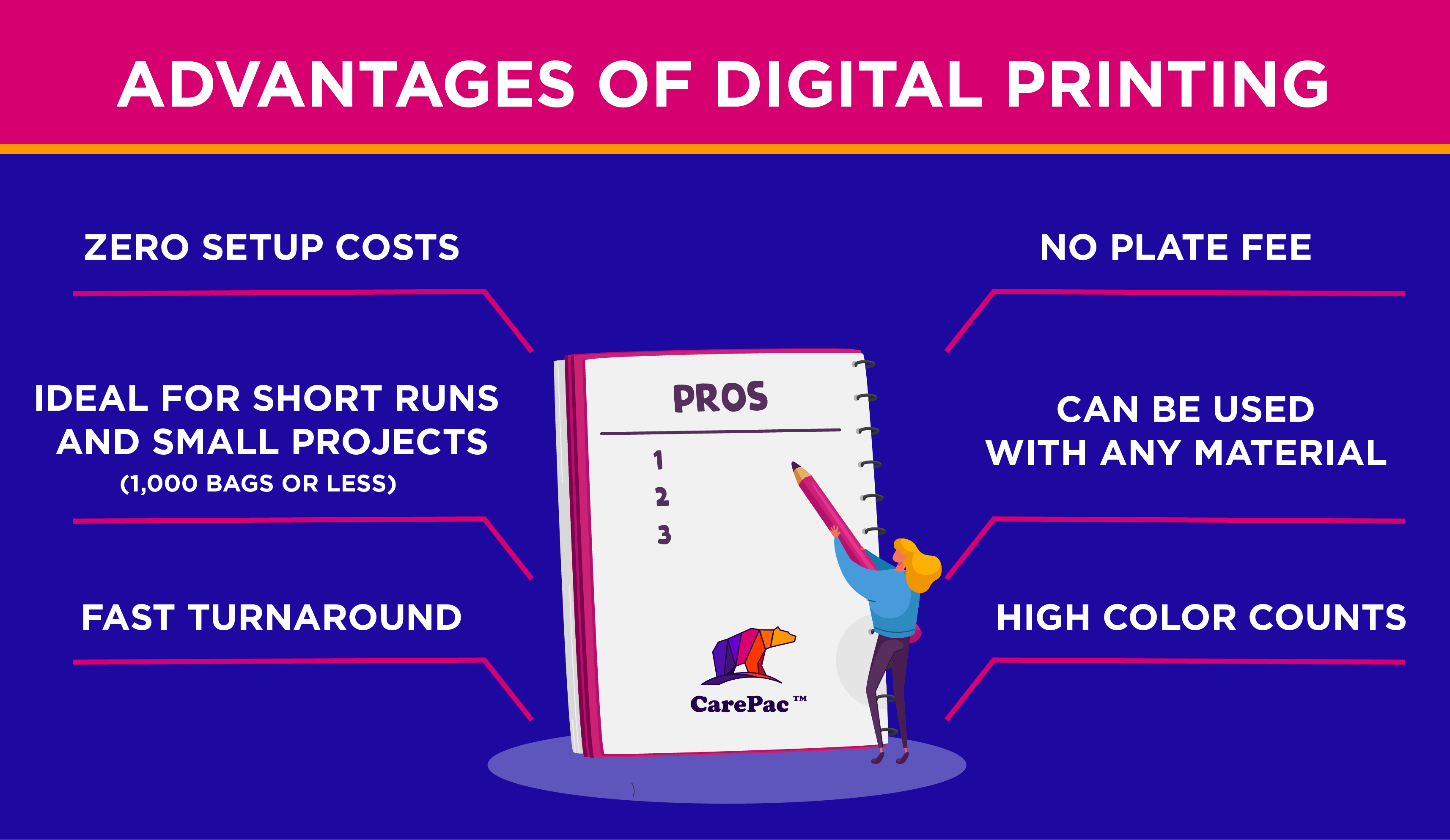About Digital Printing
About Digital Printing
Blog Article
Not known Facts About Digital Printing
Table of ContentsDigital Printing for DummiesDigital Printing - TruthsDigital Printing for BeginnersMore About Digital PrintingThe 20-Second Trick For Digital PrintingThe Main Principles Of Digital Printing
Variable information printing, such as straight mail with personalized codes and addresses, is preferably suited for digital printing. Digital fast printing just needs 4 actions of layout, evaluation, printing and binding to obtain everything done. Digital quick printing has an unmatched advantage: print on need.According to PMMI, electronic printing permits brand names and manufacturers to respond rapidly to client needs while boosting the supply chain, decreasing warehousing expense and waste, and appreciating faster time to market. That all noises excellent, however exactly how does this modern technology do all that? The significant differentiator of these modern technologies is that there are no set-up fees and no plates with electronic printing.
What Does Digital Printing Mean?
According to Wikipedia, the biggest distinction between digital printing and traditional approaches such as lithography, flexography, gravure, or letterpress - Digital Printing is that there is no requirement to replace printing plates in digital printing, whereas in these analog printing approaches home plates are continuously replaced. This results in quicker turn-around time and reduces cost when making use of electronic printing.
Quick production implies getting your item to market faster. It additionally indicates it's much easier and faster to make changes later, when you alter a dish, add a SKU, or develop seasonal product packaging. Digital printing is highly adaptable, so it's easy to make adjustments to the bundle layout swiftly. It all returns to the plates.
With conventional printing approaches, short-run printing is just not possible. Since a fantastic layout can make or break your product, electronic printing continually creates top notch, clear and vivid graphics each time.
Digital printing is the process of printing digital-based pictures directly onto a range of media substrates. There is no demand for a printing plate, unlike with offset printing. Digital files such as PDFs or desktop publishing data can be sent out straight to the digital printing machine to print theoretically, image paper, canvas, textile, synthetics, cardstock and various other substratums.
The Only Guide for Digital Printing
According to PMMI, electronic printing enables brand names and makers to react swiftly to client demands while improving the supply chain, reducing warehousing cost and waste, and delighting in faster time to market. That all sounds terrific, but how does this modern technology do all that? The significant differentiator of these innovations is that there are no set-up fees and no plates with digital printing.
This results in quicker turn-around time and reduces cost when making use of digital printing.

The 6-Second Trick For Digital Printing
With traditional printing approaches, short-run printing is just not possible. Due to the fact that a terrific layout can make or break your product, digital printing Full Report consistently produces premium, clear and vivid graphics each time.

According to PMMI, electronic printing allows brand names and manufacturers to respond promptly to customer needs while boosting the supply chain, decreasing warehousing price and waste, and appreciating faster time to market. That all sounds excellent, but exactly how does this modern technology do all that? The major differentiator of these innovations is that there are no set up charges and no plates with electronic printing.
See This Report about Digital Printing
According to Wikipedia, the greatest distinction in between electronic printing and typical approaches visit this website such as lithography, flexography, gravure, or letterpress is that there is no demand to change printing plates in electronic printing, whereas in these analog printing approaches home plates are repeatedly replaced. This results in quicker turn-around time and decreases price when making use of electronic printing.
Digital printing is very adaptable, so it's very easy to make adjustments to the bundle design quickly. It all goes back to the plates.

Digital Printing Fundamentals Explained
Digital printing is the process of printing digital-based photos directly onto a selection of media substrates. There is no demand for a printing plate, unlike with offset printing. Digital documents such as PDFs or desktop posting files can be sent out directly to the electronic printing press to publish on paper, picture paper, canvas, textile, synthetics, cardstock and other substratums.
Report this page